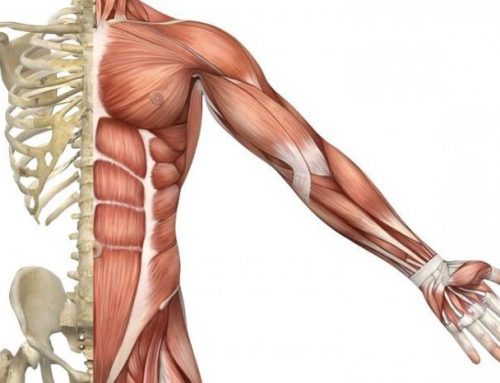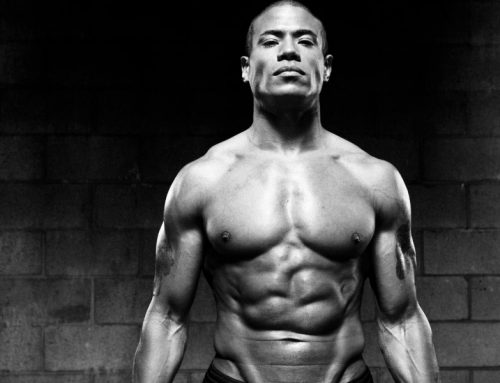The Vader Training Principles are a set of training rules that have been formed over several decades. Some training principles have stood the test of time and are still relevant today, while others have proven less successful and have been discarded in the process of use. In this regard, the following set of principles is not intended to be absolute and represents only those principles that, from the author’s point of view, are relevant at this time.
General Principles
Mental Preparation.
Bodybuilding is a sport for thinking people who know the basic principles of anatomy and physiology, diet and nutrition. Those involved in bodybuilding should have a specific goal, the achievement of which depends on ambition and stamina in overcoming all the stages. You should set yourself a goal for a long period – a year or several years, and a goal for a short period – a few weeks or months. A clearly defined goal generates extra energy and enthusiasm. If, after a certain period, you fail to achieve your goal, you should thoroughly analyze your training methods, change exercises, weights, etc. For a bodybuilder, each training session should become a certain stage in achieving the goal.
Systematicity of training.
Every workout of the planned cycle is important, no workout should be missed, not a single session without a special reason. It is necessary to overcome your weakness, it develops your ambition, causes additional energy.
Atmosphere.
You should choose a gym that allows for a good workout, with ventilation, the ability to shower after class, and a good atmosphere that leads to healthy competition in the workout and lifts your mood for a hard workout. Strength training in your own home can have a negative effect on concentration, which is distracted by the alternative of choosing whether to perform another approach, or watch a movie on television. If you have to devote 30 minutes to get to the gym, then you’ll be more willing to put a little more effort into your workout.
Warm-up.
Before strength training is very important warm-up. The warm-up is done to “tune up” mentally and physically. You must prepare your body for increased activity. It is necessary to perform several bends, turns, circular movements of the arms, squats without weight, push-ups from the floor, as well as a series of stretching exercises. You should also warm up the muscle groups that you are going to train. To warm up these muscles, you can use light weights to increase blood flow to the muscles. People who do not use a warm-up expose themselves to the risk of muscle tears and the accompanying pain, which can lead to a desire to stop further training. Therefore, the warm-up should be treated as a very important, integral part of the workout.
Training partner.
When implementing a hard training program, the enthusiasm of a training partner helps a lot. This should be someone you treat with respect and who has about the same degree of fitness as you. A good partner will encourage you to work with more weight and perform more reps in a series. This workout will be more varied because it is performed in a competitive atmosphere.
Choice of exercises.
Never copy the complexes of famous athletes, exercises should be selected according to personal capabilities and needs. Well-trained bodybuilders use many different exercises, often performed in the form of superseries, but even they, in the initial stages of training trained only the main muscle groups. The main principle in selecting exercises is that simple exercises with heavy weights should be used for muscle mass, while more complex exercises with less weight should be used for relief.
Series and repetitions.
The number of series and repetitions depends on the individual capabilities and degree of fitness of the athlete. The general mandatory principle is that fewer repetitions and series are used for muscle mass and more for relief.
BEGINNERS.
These principles are for people training for the first year.
Progressive muscle overload.
To increase muscle mass and strength, you need to progressively increase the load on the muscles, overload them by constantly increasing the weights. To increase strength requires a systematic progression of weights (increasing weights), to increase mass – not only the progression of weights, but also the progression of the number of series and training. The principle of constant muscle overload is present in almost all disciplines of sport. Obviously, the progression of weights depends on the capabilities and fitness of the athlete. The weights and training intensity should not be increased rapidly.
Muscle isolation.
In each exercise, muscles can work differently depending on body position. To consciously build and develop different muscle groups, which is the goal of bodybuilding, you should strive to isolate the muscles being trained as much as possible by using appropriate exercises and positions.
Change of loads.
Our body gets used to constant weights and exercises quite quickly, so we should always strive for variety of training loads by changing exercise programs, weights, series, body positions – thus avoiding adaptation to a monotonous load.
Priority.
The principle of priority is to train muscles that are weaker or underdeveloped first. The principle is based on the fact that every athlete, at the beginning of training has the most energy and strength and therefore can train the most intensely.
MIDDLE LEVEL OF TRAINING.
These principles can be used by bodybuilders who have been training for at least one year and have the appropriate practical skills..
The pyramid system.
Muscle fibers are strengthened and thickened by maximal contraction when working with large weights. Series should be started with smaller weights and more repetitions – this will protect you from injury and prepare your body for working with heavier weights.
SPLIT – splitting a workout.
After a certain period of training, you can increase the intensity by splitting all bodyweight exercises into two parts (upper and lower) and training 4-5 times a week. Using the principle of division, you can increase the number of series on individual muscle groups and also achieve an increase in the intensity of the workout.
Super Series.
This principle consists of using two exercises for antagonist muscles (e.g. biceps and triceps) without rest breaks, such superseries not only increase the intensity of the workout, but also lead to faster recovery of the trained muscles.
Combination series.
Combined series are performed without rest breaks for one muscle group. For example, two different exercises are used for the same muscle group: standing barbell curls and seated dumbbell curls – both exercises “attack” the biceps from different directions.
Continuous Muscle Tension.
The principle is to keep the muscle being trained in tension during the exercise, both in the lifting and lowering phases. The tension of the muscles involved in the exercise should be constantly monitored.
Cyclicality of training.
The annual cycle should be divided into periods, during which attention is emphasized alternately on the development of strength and mass, proportions and relief. This method avoids monotonous training, the use of heavy weights throughout the year and allows the body time to recover.
An advanced level of training.
Forced Repetitions.
This principle is used not as an aid in reducing stress to the muscles being trained, but as a way to increase the intensity of the workout. It consists of the following: when you perform an exercise and are no longer able to lift the weight yourself, a training partner helps you perform an additional 2-3 reps.
Trisettes.
The principle consists of performing three different exercises on a muscle group without rest, which significantly increases the intensity of the workout. The exercises should be selected to “attack” the muscle from different angles. Using this method requires a good amount of prior training.
Series giants.
The principle is to perform 4-6 different exercises on one, usually large, muscle group. All exercises are performed without rest breaks – time is given only to move from one position to another. This principle is used mainly in the pre-competition period for the final formation of muscles, giving them relief and density. This applies to difficult-to-develop muscles such as calves, mid-chest, abdomen.
Preliminary exhaustion.
If you perform knee leg extensions in the machine first, and then barbell squats, it will result in a complex fatigue of the quadriceps femoris muscle, and less use of the sciatic muscles in the barbell squats.
Upper muscle tension.
The principle of overhead tension is applied at the moment of maximum muscle contraction. For example, when clasping the arms in the upper position when performing barbell bends, the tension decreases at the top of the movement, so it is necessary to lean forward slightly to hold the maximum contraction of the biceps for another 2-3 seconds. Using this principle leads to the development of “round” biceps.
Negative Repetitions.
The principle is to perform only the inferior part of the repetition (eccentric work). It has been found that only about 36% of muscle fibers are actively engaged in the overcoming work phase, while controlled weight lowering (eccentric work) can engage over 70% of muscle fibers. The number of fibers involved in the work is doubled. It is clear that the application of this principle has a positive effect on increasing muscle mass. Applying this principle allows you to use much heavier weights than in a normal workout – approximately 40-70%. Only the inferior phase of the movement is performed, for example, you only lower the barbell in the bench press in a controlled manner, and your training partners help you to lift the projectile.
Cheating.
The principle is that when you are no longer able to perform further reps in the clean, you use body sway to perform additional reps. The application of this principle is less desirable – it is better to use forced reps.
Burning (or half-repetitions).
3 to 6 partial reps (e.g. without full extension or full arm flexion) at the end of an approach lead to additional lactic acid accumulation in the muscles, resulting in a burning sensation in the muscles (as a result of the high concentration of lactic acid). This leads to additional breakdown of structural proteins and, as a consequence, additional increase in muscle mass.
Nested series.
Meaning mainly series on small muscle groups such as calves, abdomen, forearms. Nested series are performed in between series on large muscle groups such as legs, chest, back.
Stepping (or stripping).
Consists of the fact that after performing a certain number of repetitions, the two partners remove some of the weight from the barbell, and the trainee continues to further perform the exercise. This is a kind of stretching of the series, forcing the muscles to work more intensely.
Double split.
The double split system consists of applying two workouts per day to two different body parts. As a result of this split, it is possible to load all body parts more intensively. This system is only used by the most prepared bodybuilders, and usually 2-4 weeks before a competition.
Triple Split.
Consists of three workouts per day (morning, afternoon and evening) but is only used by a very small number of bodybuilders and for a very short period of time.
Instinctive Training.
Every experienced bodybuilder knows better what exercises and weights are most optimal for their body. Remembering that every body reacts a little differently to the load, you should always monitor your reaction and select such principles and exercises that, in a given training period, have the greatest impact on muscle development. It is not necessary to force yourself to perform the planned number of series or repetitions. If you don’t feel well on any given day, train less intensely and for a shorter period of time.
-
- The next chapter: 11. Developing a training methodology
- Previous chapter: 9. Pyramid training method
The use of materials of the site in printed publications is possible only after obtaining written permission of the author of the site.






